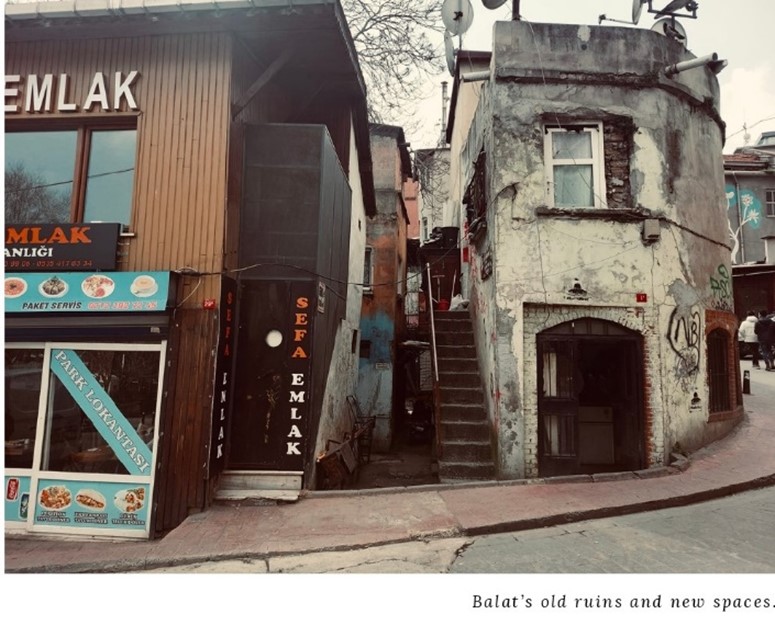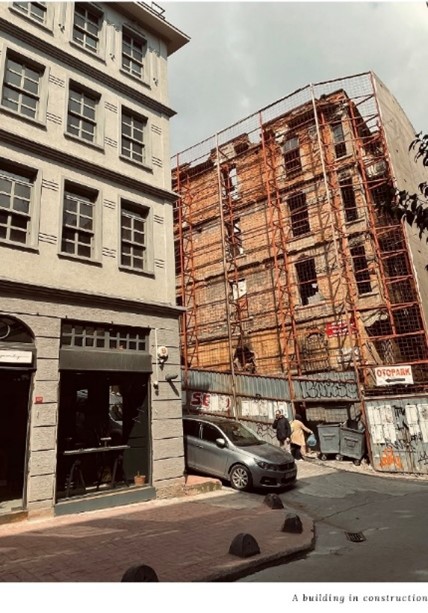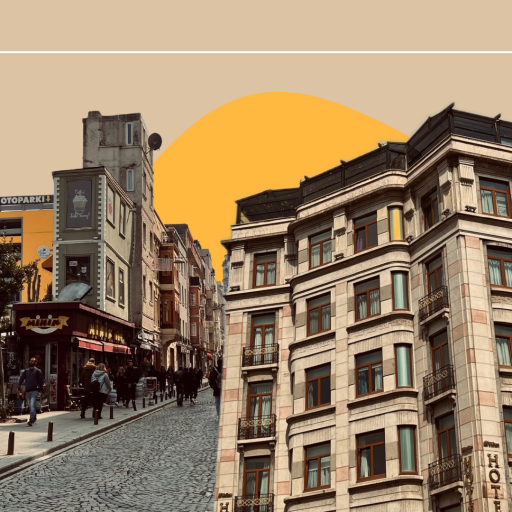Contrast of Old and New
17 Eylül 2022Hajra Chughtai, Hibah Ambreen, Vania Khan
Our photo essay project began with deciding where we would take pictures. Keeping in mind our topic, the contrast between old and new, we found Balat and Beyoglu to be interesting locations where we could find much contrast between compelling old and new architecture. We, as a team, decided on athe suitable time and day for visiting Balat to begin our research.

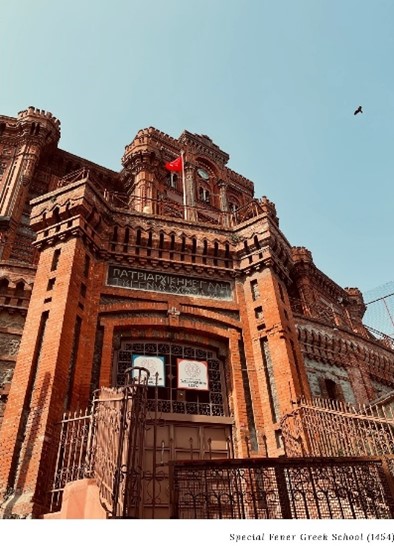
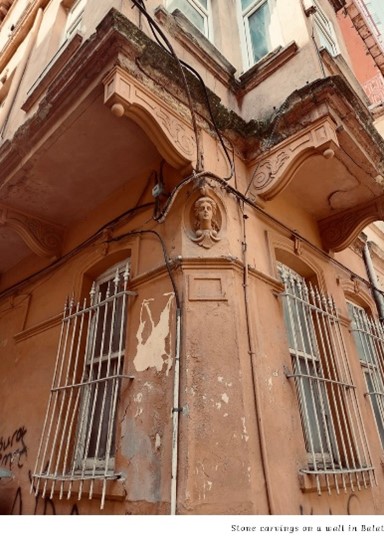
Starting with the old architecture, we focused on ordinary houses or buildings that had old architectural features. We also visited the Cathedral Church of Saint George and Special Fener Greek High School. Saint Georges Church is located beside a relatively new and modern architectural site which created an effect of bringing up the archaic features of the Church. As for the Special Fener Greek School, founded in 1454, its red brickwork indicates the ancient Greek architecture designed by the Greek architect Konstantinos Dimadis. This school’s beautifully detailed work drove us to locate the building in Balat and capture its photographs. The third picture in our photo essay highlights many elements that make the photo look longstanding yet incredibly aesthetically pleasing. The door in the middle of the frame looks like it was is an entrance to a no longer existing building. The door leading nowhere indicates that the building that once stood there has been demolished. Moreover, the dry tree braces covering the roofs are form a practical component that encompasses the whole photograph, giving an old scenic feel. The fourth picture in our photo essay depicts a beautiful architectural work on a building and what makes it seem old is its broken walls, writings on the walls, and rusty window bars. However, even with these elements, the beauty of the building does not diminish; instead, it projects the building as an antique. Moving on, two of the pictures in the old architecture part of our photo essay display buildings that gives a feeling that the buildings might be abandoned. Their windows give a sense of empty hollow space, which again indicates the factor of these buildings being old.
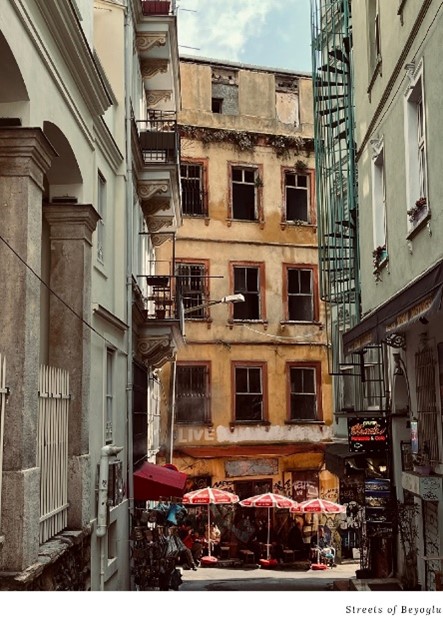
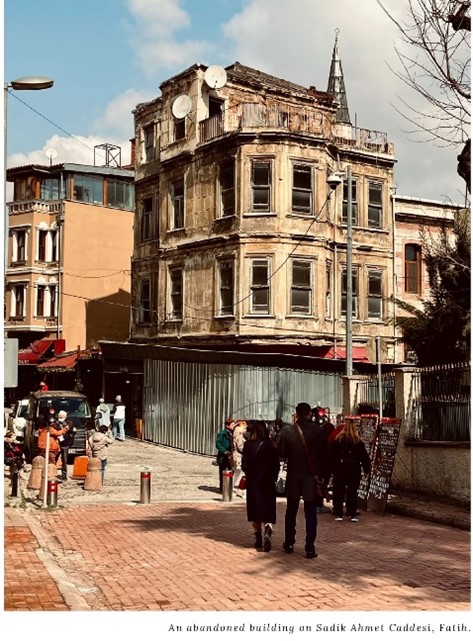
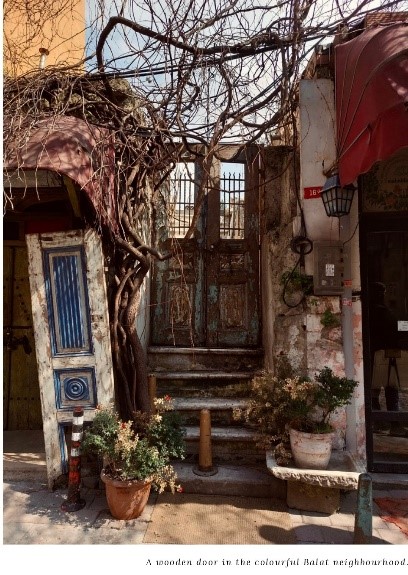

You can find the history of Istanbul in its crumpled ruins and rundown structures. However, now the city embodies new confidence and energy. On this bright sunny afternoon, we took a stroll through the streets of Beyoglu, also known as the heart of Istanbul’s bustling commerce. The same old and dingy buildings are now being renovated at a startling pace, with new hotels, coffee shops, bars, and clothing stores sprinkling everywhere. In the shadows of the Galata Tower, we saw old buildings that have now found new uses. Banks turned into art galleries; abandoned apartments turned into restaurants and theatres. Beyoglu is genuinelytruly a great representation of Istanbul’s new cultural and entrepreneurial life. The First Town Hall of Istanbul in 1885, inaugurated as the municipality of the Ottoman Era, still belongs to the Beyoglu Municipality. The outer facade has been stripped and restored, keeping the original textures intact, and the building is being re-functionalized to meet the needs of a modern municipality campus. The courtyard in the front can be seen crowded with people as it offers safe places to walk and admire the spaces and architecture around this almost town center. Some coffee shops around the area work as offices as well. For instance, Proje Cafe is a coffee shop and an architectural office for house and showroom designs. Some cafes reflect the strong visuals of contemporary art in Istanbul. The giant panda and the butterflies painted on the back of a particular building grab the attention of the passers-by and allow you to embrace this modern culture brimming with life and bright energy. Next, we took the tram to Sultanahmet and came across the Hotel Amiral Palace, in the Fatih district, away from the hustling Beyoglu. It overlooks the Marmara Sea and is surrounded by historical remnants of a city, long reigned over by empires as vast as the sea views. Its architecture offers a beautiful combination of old nostalgia and contemporary designs. As you walk down the hill it is set on, and the stillness of the area settles around you, you feel as if you are in a secret Istanbul, as if you have landed a hidden gem, a warm hotel with its ornate entrance and magnificent facade.
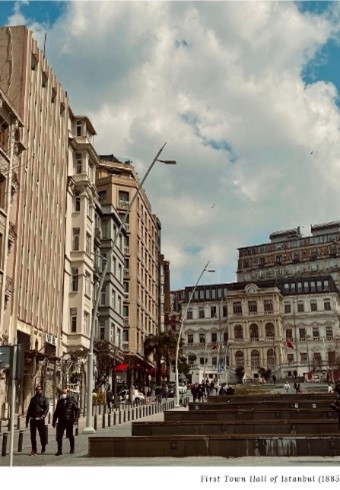

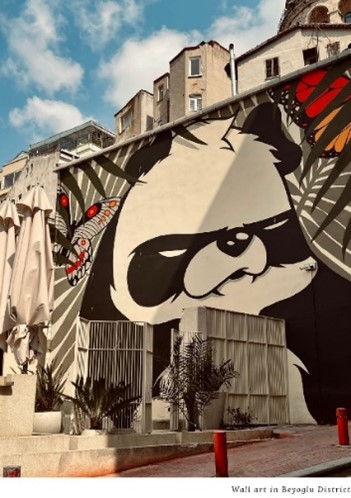
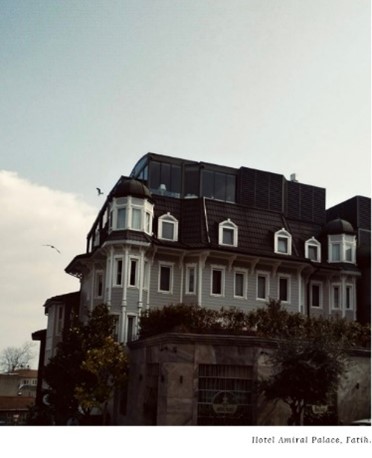
Istanbul being a metropolitan city, is ever-changing and ever-evolving. With new structures being built to keep up with the fast-paced needs of the city, it is not uncommon to see older and newer architectural elements overlapping each other and complementing each other. With its rich culture and history, the city is filled with jewels from its past, whereas at the same time, with modernization, contemporary elements and design have also invaded much of the city. In Balat, we came across many examples where the older architecture stood still in time, and the newer buildings were part of the city’s liveliness. Parallel to each other, an older much-tattered building could be seen leading to an alleyway to old residents living space, and just on the side, and in a more focused view, a cafe could be seen entertaining the visitors in the area. Another example of these old and new contrasts would be the frame in which a newer building can be seen standing proudly, and just on the side, restoration work is being done on a much older piece that would soon be given new life. This could be seen in the perspective of how no matter how much the city changes, the roots of it all will date back to the olden times. To say that the city gets its new life with the past remains is another way to put it. The structures from the past, metaphorically and physically, give strength to the city that is happening in all its glory.
